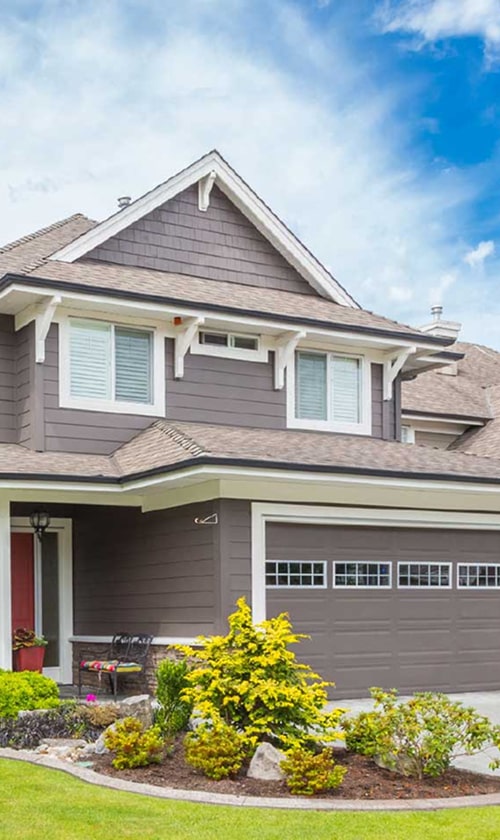Principles of Heat Pump Operations

In exploring the principles of heat pump operations, we focus on the core elements: thermodynamics, heat transfer, and the refrigerant cycle. These concepts are critical for understanding how heat pumps move thermal energy to provide heating and cooling with significant efficiency.
Thermodynamics and Heat Transfer
The foundation of heat pump technology resides in thermodynamics, the physics that describe how heat moves from one place to another. At the heart of this is the principle that heat naturally flows from warmer to cooler spaces. Our heat pumps are designed to reverse this natural direction using electricity, which allows them to extract heat from cool air and release it into a warmer interior during heating mode, or vice versa for cooling mode.
The coefficient of performance (COP) measures a heat pump’s efficiency, indicating how effectively it transfers thermal energy compared to the amount of electrical energy used. The COP generally improves as the temperature differential between the heat source and destination decreases. This efficiency is a key advantage of using heat pumps.
Refrigerant Cycle in Heat Pumps
The refrigerant cycle is where the magic happens, and it hinges on a substance called refrigerant. This cycle involves four key components: the compressor, the expansion valve, and two heat exchangers.
- Compressor: Increases the pressure and temperature of the refrigerant gas, preparing it for heat release.
- Heat Exchanger (Condenser): In cooling mode, the refrigerant releases its heat to the outside air, condensing into a high-pressure liquid. In heating mode, it pulls in heat from the outside to use indoors.
- Expansion Valve: Lowers the pressure of the refrigerant liquid, causing it to cool significantly due to the Joule-Thomson effect.
- Heat Exchanger (Evaporator): The cold refrigerant absorbs heat from the interior air in cooling mode, or from the outdoor air in heating mode, evaporating into a low-pressure gas.
This cycle continues repeatedly, driven by electricity, with the specific heat properties of the refrigerant enabling it to absorb and release substantial amounts of thermal energy. It’s a continuous loop of energy transformation governed by the immutable laws of physics.
Types of Heat Pumps

We can categorize heat pumps into several types based on their source of heat and method of heat transfer. Each type offers distinct advantages and is suited for specific climates and environments.
Air-Source Heat Pumps
Air-source heat pumps transfer heat between the inside of a building and the outside air. There are two main variations:
- Air-to-air heat pumps: These are common and usually referred to simply as air-source heat pumps. They transfer heat from the outside air into the building in heating mode and reverse the process to cool the building in summer.
- Air-to-water heat pumps: These systems distribute the heat via a water-based heating system which could be underfloor heating or a radiator circuit.
Ground-Source Heat Pumps
Ground-source heat pumps, also known as geothermal heat pumps, utilize the relatively stable temperature of the earth as the heat exchange medium. They are highly efficient, making them a suitable option for dramatic seasonal climates. These heat pumps include:
- Horizontal systems: Installed in trenches a few feet below the earth’s surface.
- Vertical systems: Pipes go deep into the ground, making them ideal for smaller plots of land.
Hybrid Heat Pumps
Hybrid heat pumps combine air-source and ground-source technologies to create more efficient systems. They can decide the most efficient mode to operate in based on the temperature and may include:
- Central air systems with a geothermal backup: These systems typically run as an air-source heat pump but switch to geothermal when it is more efficient.
- Mini-split systems with hybrid functionality: These units can function as an air-source or ground-source heat pump depending on external conditions. They are particularly useful for homes without existing ductwork.
System Components and Functionality
In this section, we explore the essential components of heat pumps and their roles in both cooling and heating modes. By understanding these parts, we grasp how heat pumps transfer heat energy in a remarkably efficient manner.
Heat Pump Coils
The coil is a crucial component in both the outdoor and indoor units of a heat pump. Outdoor coils act as condensers that release heat in the summer and absorb it in the winter. Indoor coils function similarly but in reverse, absorbing heat during the cooling cycle and releasing it during the heating cycle.
- Evaporator: When operating in cooling mode, the indoor coil serves as an evaporator, absorbing heat from the indoor air.
- Condenser: In heating mode, the indoor coil becomes a condenser, emitting heat to the indoor air.
Compressors and Valves
Compressors and valves are at the heart of a heat pump’s functionality, circulating the refrigerant and switching between heating and cooling modes.
- Compressor: Pressurizes the refrigerant, increasing its temperature.
- Reversing Valve: Changes the direction of refrigerant flow, allowing the heat pump to switch between cooling and heating.
Refrigerant Lines connect the indoor and outdoor units, transporting the refrigerant between the compressor, evaporator, and condenser coils.
Fans and Ductwork
Fans and ductwork are responsible for distributing conditioned air throughout our home, ensuring a comfortable environment.
- Fans: Propel air over the indoor coils, facilitating heat exchange.
- Ducts: Serve as vessels for transporting air to various rooms.
Our heat pumps’ indoor unit contains a fan that circulates air over the indoor coil, while the outdoor unit includes a fan to move air over the outdoor coil. The efficiency of heat pumps makes them preferable over traditional furnaces and radiators, particularly when integrated into ductwork designed for even, energy-efficient air distribution.
Efficiency and Environmental Impact

In evaluating heat pumps, it’s crucial to consider their high efficiency rates and their beneficial impact on the environment when compared with traditional heating systems.
Energy Use and Savings
Heat pumps are renowned for their coefficient of performance (COP), a measure indicating the efficiency of a heat pump’s energy use. Typically, heat pumps have a COP ranging between 3 and 5, which means for every unit of energy consumed, three to five units of heat are produced. This translates to remarkable energy savings, especially when shifting from systems that use oil or gas boilers. The energy efficiency of heat pumps significantly reduces utility bills. For instance, a typical household transitioning from electric heating might see considerable cost savings on their energy expenditures due to the higher efficiency of heat pumps.
- COP Rating:
- 3-5: High Efficiency
- Cost Savings:
- Electric Heating to Heat Pump: Expected reduction in heating-related utility bills.
Reducing Carbon Emissions
Switching to heat pumps from fossil fuel-based systems such as natural gas, oil, or coal heaters can lead to substantial reductions in carbon emissions. Heat pumps work by transferring heat, rather than burning fuel, which inherently decreases the household’s carbon footprint. If the heat pump is powered by renewable energy sources, like solar panels, the environmental impact is further lessened. Residential and commercial buildings using heat pumps infused with solar power can see a significant drop in carbon emissions, reinforcing the environmentally friendly nature of this heating technology.
- Carbon Emission Reduction:
- Heat Pump vs. Fossil Fuel System: Notable decrease in carbon emissions.
- Renewable Energy Integration:
- Solar Panels: Enhancement of environmental benefits.
Installation, Cost, and Maintenance
We’re going to discuss the practical aspects of heat pumps, including how to select the right system, the financial implications of using heat pumps over time, and how to keep them running effectively.
Choosing the Right Heat Pump
When selecting a heat pump, it’s imperative to consider the specific needs of our home. Options range from geothermal heat pumps, which use the stable temperature of the ground, to air-source pumps more suitable for moderate climates. We must assess factors such as the local climate, our home’s size, and existing HVAC systems. A typical home might benefit from a ductless mini-split system if retrofitting is a concern, whereas larger homes with existing ductwork might opt for a more robust central AC/heat pump combination.
- Geothermal pumps: Higher initial cost but suitable for cold climates and can offer heating, cooling, and hot water.
- Air-source pumps: More common, suitable for moderate climates and can operate as both heating and cooling system.
- Mini-splits: Ideal for homes without ductwork, allowing zonal control of temperatures.
Engaging a professional HVAC contractor for the installation is crucial. The contractor will evaluate our home’s heating and cooling needs and recommend the most suitable type. For instance, replacing a traditional heating system like a furnace or boiler with a heat pump requires careful consideration of the compatibility with our current system, whether we use oil, wood, propane, or a gas furnace.
Long-Term Cost-effectiveness
Heat pumps can be a cost-effective solution for our home heating and cooling needs. When compared to traditional systems like boilers and gas furnaces, heat pumps often result in lower operating costs attributed to their ability to move heat rather than generate it. The initial installation can be higher than traditional HVAC systems, but long-term savings on fuel and energy often result in a favorable return on investment.
| Heat Pump Type | Estimated Savings |
|---|---|
| Geothermal | 30-60% on heating, 25-50% on cooling |
| Air-source | 20-40% on heating, 20-50% on cooling |
| Mini-split | 25-50% on heating, 30-40% on cooling |
These figures are estimates and depend on the specific heat pump model, local fuel costs, and the efficiency of our home’s insulation.
Maintaining Your Heat Pump
To ensure that we get the most out of our heat pump, regular maintenance is key. We should schedule professional servicing at least once a year. Tasks will include checking the filters, ducts, blower, and indoor coil for dirt and other obstructions; detecting and sealing duct leakage; verifying adequate airflow; and inspecting the refrigerant and checking for leaks.
- Filter replacement: Every 1-3 months.
- Outdoor unit inspection: Ensure there are no blockages or debris.
- Professional check-ups: At least annually.
Adhering to these guidelines not just prolongs the life of our heat pump but also maintains its efficiency, ensuring a warm home during winter and a cool one during summer. Regular maintenance also helps us avoid costly repairs and keeps the system running cost-effectively for years.




